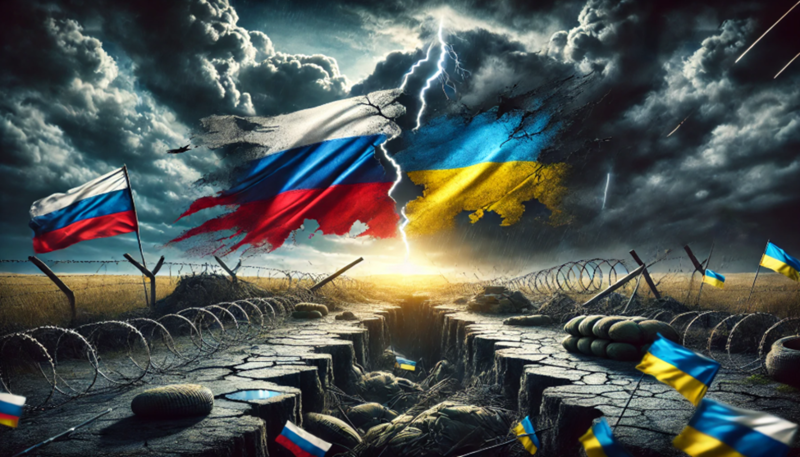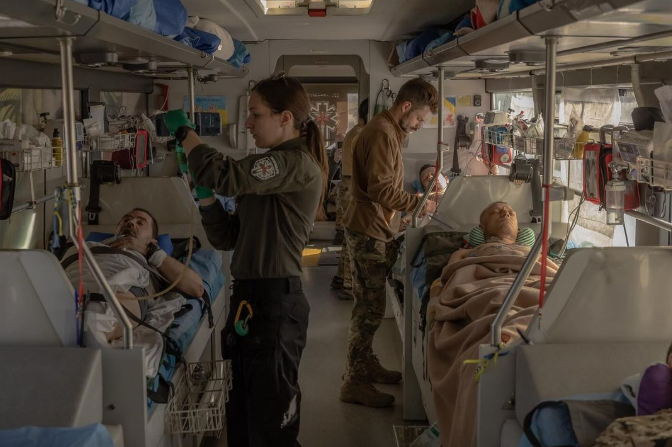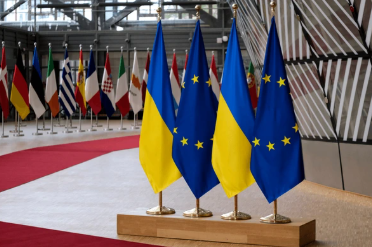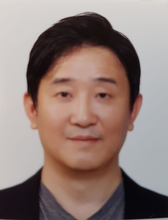The Kursk Conflict: A Pivotal Battle in the Russia-Ukraine War with Global Consequences
Input
Modified
Russia’s Aggressive Push: Tactical Advances and Strategic Goals The Intelligence Void: How U.S. Support Withdrawal Impacts Ukraine’s Defense Diplomatic Maneuvers and the Humanitarian Toll

Russia’s Aggressive Push: Tactical Advances and Strategic Goals
The ongoing conflict between Russia and Ukraine has entered a new phase of intensity, as Russian forces have initiated an aggressive military campaign in the Kursk region. The offensive, which is designed to encircle and isolate thousands of Ukrainian forces, represents a substantial change in the dynamics of the battlefield. The recent advances in Kursk by Russia, according to military analysts, are among the most significant gains in months, which has raised concerns about Ukraine's capacity to maintain its defensive positions. This escalation occurs in the context of heightened ambiguity regarding Ukraine's access to essential intelligence support, as the United States has suspended intelligence-sharing agreements. Kyiv's operational planning has been considerably affected by the move, which has rendered Ukrainian forces more susceptible to Russia's strategic maneuvers. The international community is closely monitoring the ongoing high-stakes negotiations between Ukraine, Saudi Arabia, and Western allies, which are also reshaping diplomatic discussions and strategic alliances.
The most recent offensive by Russia has been directed toward the retaking of strategic points and crucial villages in the Kursk region. Russian forces have reclaimed more than 100 square kilometers of territory, which includes settlements such as Bogdanovka, Mikhaylovka, and Agronom, according to reports. In order to obstruct Ukrainian supply lines and confine thousands of soldiers, these locations are indispensable to the overarching military strategy. The utilization of a gas pipeline by Russian special forces was one of the most noteworthy maneuvers of this campaign. According to reports, Russian operatives utilized the pipeline as an entry point to attack Ukrainian defensive positions from the rear near the town of Sudzha, traveling approximately 15 kilometers within it. This unconventional approach allowed Russian forces to achieve substantial gains in a brief amount of time by disrupting Ukrainian defenses. Moscow prioritizes the Kursk conflict as a strategic initiative to strengthen its control over border regions and reclaim lost territory. The Russian military commanders are of the opinion that by encircling Ukrainian troops in the region, they can either inflict heavy casualties or force a large-scale surrender, thereby weakening Ukraine's capacity to sustain a protracted counteroffensive.
The suspension of U.S. intelligence-sharing with Ukraine has been one of the most critical developments that has influenced the battle in Kursk. Real-time satellite intelligence, surveillance data, and early warnings regarding Russian troop movements have been provided to Kyiv by the United States since the commencement of the conflict. Nevertheless, Washington has abruptly discontinued these intelligence briefings, depriving Ukrainian forces of essential battlefield insights. The suspension has resulted in immediate repercussions. Ukrainian commanders have been experiencing difficulty in predicting Russian attacks in the absence of U.S. intelligence, resulting in unforeseen setbacks in Kursk. According to military sources, Ukrainian units were caught off guard by Russian advances, particularly the infiltration through the gas conduit. Ukraine has been compelled to rely more on its own reconnaissance efforts, which are limited in scope and technological capabilities in comparison to U.S. resources, due to the absence of up-to-date intelligence. The intelligence cut-off, according to military analysts, is a significant strategic disadvantage for Ukraine, as it complicates the coordination of defensive operations. Ukraine's capacity to execute precise artillery assaults has been diminished as a result of the absence of real-time U.S. satellite data, which has enabled Russian forces to advance with greater assurance.

The Intelligence Void: How U.S. Support Withdrawal Impacts Ukraine’s Defense
Ukrainian military officials refute allegations that their forces are immediately at risk of encirclement despite the increasing pressure. The Ukrainian General Staff has underscored that its forces are actively launching counteroffensives and fortifying defensive positions to avert a complete Russian breakthrough. In the Kursk region, key Ukrainian tactics include the use of mobile defense units to counter Russian flanking maneuvers, strategic withdrawals, and regrouping to avoid full encirclement, drone warfare to disrupt Russian logistics and command centers, and heavy artillery barrages targeting Russian supply lines. Nevertheless, the situation continues to be precarious. In Kursk, Ukrainian forces are not only engaged in a battle against Russian ground soldiers but they are also subjected to severe aerial bombardments. Ukraine's capacity to resupply frontline units has been further complicated by the targeting of bridges and roads by Russian fighter aircraft and long-range artillery.

Diplomatic Maneuvers and the Humanitarian Toll
Although the conflict in Kursk continues to escalate, Ukrainian President Volodymyr Zelenskyy is actively participating in high-level diplomatic negotiations. U.S. intelligence support has been suspended, necessitating Ukraine to pursue alternative security guarantees. This has resulted in renewed discussions with European allies and Saudi Arabia. President Zelenskyy has been in communication with Saudi Crown Prince Mohammed bin Salman, where they have been discussing the potential for a diplomatic resolution to the conflict. According to reports, Saudi Arabia is serving as a mediator in the negotiations between Western powers, Russia, and Ukraine. The following proposals are currently being discussed: a Black Sea ceasefire agreement to facilitate the continuation of grain exports, a long-range missile ceasefire to minimize civilian casualties, the exchange of prisoners of war between Russia and Ukraine, and the provision of U.S. access to Ukraine's rare earth minerals in exchange for security commitments. In addition to Saudi mediation, European nations are increasing their involvement. At a recent meeting in Paris, representatives from more than 30 countries engaged in a discussion regarding the establishment of an international security force for Ukraine. This mission may necessitate the provision of additional military assistance to Kyiv and the deployment of peacekeeping forces in contested regions. A coalition of 20 countries has expressed its readiness to assist with post-ceasefire stabilization efforts, and Spain has also announced its participation in a European peacekeeping mission.
The escalation of violence in Kursk is not solely a military crisis; it is also a humanitarian crisis. If successful, the encirclement of Ukrainian forces could result in a potential humanitarian catastrophe and mass casualties. Thousands of civilians are already fleeing to calmer regions in central Ukraine, as the displacement of civilians from the contested areas continues to escalate. Additionally, the potential repercussions for Ukraine's overall war effort could be severe if Russian forces are able to completely disrupt Ukrainian supply lines. Some military experts caution that a Ukrainian defeat in Kursk could potentially result in a shift in the broader strategic balance in favor of Russia, which could lead to renewed offensives in other regions of Ukraine. Nevertheless, Ukraine's fortitude should not be disregarded. Ukrainian forces have employed guerrilla operations, drone technology, and Western-supplied weaponry to thwart Russian advances, demonstrating adaptive warfare tactics throughout the conflict. The upcoming weeks will be critical, as Ukrainian forces endeavor to maintain their position in Kursk and international diplomatic efforts are made to avert further escalation.
The Kursk conflict is a critical juncture in the Russia-Ukraine war. Ukraine is currently confronted with one of its most difficult conflicts to date as Russian forces continue to employ aggressive tactics. Kyiv's capacity to defend its positions has been further complicated by the suspension of U.S. intelligence support, which has raised urgent concerns regarding future Western military assistance. At the same time, diplomatic negotiations are in progress to investigate the feasibility of international security cooperation and ceasefire agreements. The subsequent phase of the conflict will be contingent upon the capacity of Ukraine's allies to offer substantial assistance, in addition to the results of the battlefield. The stakes have never been higher as the world observes closely. Will Ukraine be able to maintain its position in Kursk, or will Russian forces be able to encircle and vanquish thousands of troops? The outcome will have a lasting impact on the global geopolitical landscape and the future of the conflict.





















